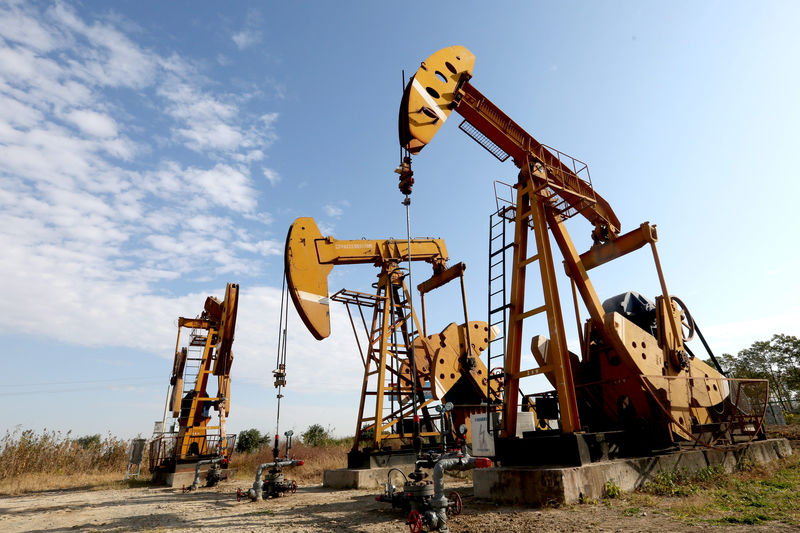By Arathy Somasekhar and Nicole Jao
HOUSTON (Reuters) -Oil prices were little changed on Friday, but were set to end a three-week rally on profit-taking and as markets weighed supply concerns stemming from Russia’s fuel export ban against demand woes from future rate hikes.
futures rose 6 cents at $93.36 a barrel by 12:58 p.m. ET (1758 GMT). U.S. West Texas Intermediate crude (WTI) futures rose 33 cents, or 0.4%, to $89.96 a barrel.
After rallying more than 10% in the previous three weeks on concerns about tight supply, both benchmarks were set to ease about 1% this week.
“Investors are anticipating a slack in demand coming into October as refineries go into maintenance and as higher interest rate is going to further pressure markets,” said Dennis Kissler, senior vice president of trading at BOK Financial, adding that there was also some profit taking.
U.S. Federal Reserve officials warned of further rate hikes, even after voting to hold the benchmark federal funds rate steady at a meeting this week.
“Inflation is still too high, and I expect it will likely be appropriate for the (Federal Open Market) Committee to raise rates further and hold them at a restrictive level for some time,” Fed Governor Michelle Bowman said.
A potential further rise in energy prices, she noted, was a particular risk she was monitoring.
Higher interest rates increase borrowing costs, which could slow economic growth and reduce oil demand.
Meanwhile, Russia’s temporary ban on exports of gasoline and diesel to most countries was expected to tighten supplies.
Russia’s Transneft suspended deliveries of diesel to the key Baltic and Black Sea (NYSE:) terminals of Primorsk and Novorossiysk on Friday, state media agency Tass said.
The ban will “bring new uncertainty into an already tight global refined product supply picture and the prospect that the impacted countries will be seeking to bid up cargoes from alternative suppliers,” RBC said in a note.
Russian wholesale gasoline prices were down nearly 10% and diesel down 7.5% on Friday on the St. Petersburg International Mercantile Exchange.
U.S. refineries routinely do maintenance in autumn after heavy runs to meet fuel demand from the summer driving season.
U.S. offline refinery capacity was expected to reach 1.4 million barrels per day (bpd) this week according to IIR Energy versus 800,000 bpd offline last week.
Meanwhile, U.S. oil rigs fell by eight to 507 this week, their lowest since February 2022, energy services firm Baker Hughes said.
Read the full article here



